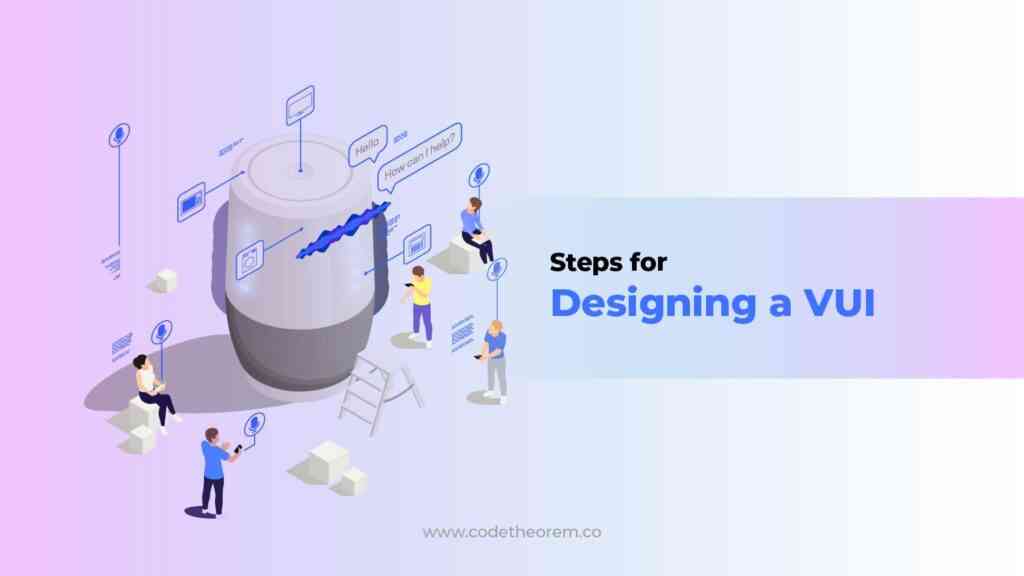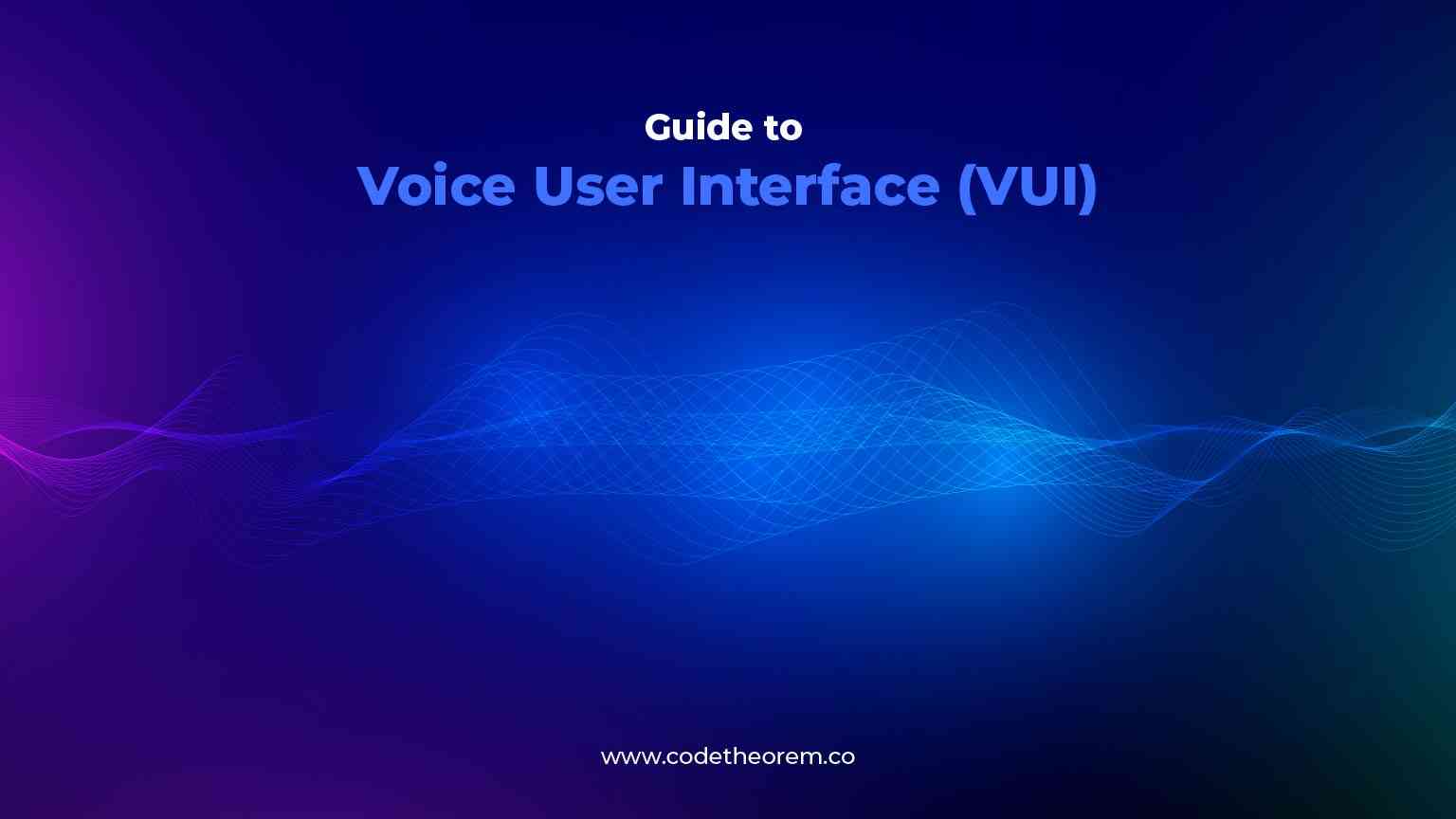“Hey Siri, call mom.” “Alexa, play Perfect by Ed Sheeran.” “Okay, Google! Explain VUI to me.”
Humans love convenience. We often enjoy tasks that require little input from ourselves. Needless to say, advancements in technology have been trying to make things easier for us. The potential of AI has not once failed to surprise us. Technology has made our lives simpler by introducing GUI or the graphic user interface, internet, touchscreen mobile phones, VUI, and more.
All have transformed our lives into what we call today the “modern” way of living. Remember using the Siri for the first time on your iPhone 4S? This was back in 2011. Since then, VUI, or the voice user interface has only made progress – Alexa, Google Assistant, Cortona, and more.
We have truly made progress over time. From clicking a key multiple times to tye a letter to Nokia Communicator 9000’s qwerty keypad. Typing texts by clicking these buttons too simply clicking on the touchscreen. And now? All you need to do is command your phone to type out your texts. Not just this, your device will also play music, call your friends, set alarms, book cabs, and more!
But what is a VUI, and why is it turning heads in the world of technology? In this blog, you will learn the following:
- What is a voice user interface?
- How does VUI work?
- How to go about a VUI design?
- What are some VUI design guidelines?
- Challenges in the field of voice user interface design and the future of VUI.
What is VUI (Voice User Interface)?

A VUI or a Voice User interface allows you to interact with a device such as a mobile phone or laptop or an application using voice commands. You don’t need to touch your device or use the application yourself. All you need to do is give it a voice command. This means that VUI is entirely hands-free and eyes-free.
How Does a Voice Interface Work?

A VUI is similar to apps that run on an operating system and a device. It makes use of 3 layers. These layers work together to efficiently establish a voice interaction. Furthermore, each of these layers supports the layer above. Simultaneously, the layers also use the layer below them.
The voice interface lies in the top two layers. It resides in the cloud and not on the device. The backend infrastructure is frequently kept in a public or private cloud. Also, this is where the user’s speech is processed. AI components determine the user’s intent and deliver a response to the device or application where the user is interacting with the VUI.
A voice user interface design involves multiple Artificial Intelligence (AI) technologies. Following are some of them:
- Automatic Speech Recognition
- Name Entity Recognition
- Speech Synthesis
Some of the well-known VUIs include Siri by Apple, Alexa by Amazon, Google Assitant, Cortana by Microsoft, and Alice by Yandex. VUIs often contain images developed by a Graphical User Interface and extra sound effects to accompany them. This gives users the greatest user experience. Today, each VUI has its unique set of sound effects. This lets the users know whether the VUI is listening, processing speech, or replying to the user.
After understanding VUI and how a voice user interface design works, let’s see the steps for a VUI design.
Steps for Designing a Voice User Interface (VUI)

A voice design process is simple as long as you follow a proper process. You must take into account the fundamental needs of the users if you want to create an excellent voice design. This will also help you create a charismatic voice UX or a voice UI. A voice UX lets users own the conversation. It is vital because users use it to access your product and solve their problems.
Following is a general overview of the process to design an efficient voice user interface:
1. User Research
User research simply means research about your audience. For a VUI to be effective, you must keep your users at the center of the voice interface design process. The main goal of conducting user research is to understand your users. To understand their needs and behavior. This information will then become the foundation of your vui.
Following are some aspects you must focus on while researching for your VUI:
- Why do they need a VUI?
- What are their pain points?
- How do they talk?
- What are some common phrases they use?
- Do they use native words in their day-to-day life?
These questions will help you design a comprehensive voice design. An analysis of these questions will also help you improve your voice interaction.
2. Product Shaping
The next stage is to define and shape your voice user interface products. This will give you an idea of how to shape your voice assistants, develop voice control, and determine voice command. Furthermore, it will help you determine the flow of your voice app and voice search.
You can break this step into 2 broader parts. First, determining interaction scenarios. Two, ensuring these scenarios work with voice. The goal is to chart out common and specific scenarios where users can use VUI. While some cases are because users are engaged and cannot physically perform the activity. Others can be because the user wants to do it quickly.
Following are some instances:
- Commanding the VUI to call someone while you are working in the kitchen.
- Asking the voice interface to play music.
- Directing the VUI to send a text to a family member while you are driving.
- Asking the voice interface to find a meaning of a word and more.
This step is vital because only after identifying the scenarios can you turn them into a conversational dialogue flow. You can use a matrix to identify the importance and utility of the situation.
Three factors come into play here. They are as follows:
Intent
Intent refers to the objective of the command. A high utility intent is a specific and straightforward command. For instance, “Play Perfect by Ed Sheeran.” On the contrary, a low utility intent is a vague or ambiguous command. For instance, “Play some music.”
Utterances
Utterances refer to the many ways a user can command voice interfaces. It simply means variations in the request phrase. For instance, if a user wishes to listen to music, the user can initiate it in the following ways:
- Can you play some music?
- Play a song
- I want to listen to a song
- Play some tracks
All voice UX and voice UI designers must consider these variations.
Slot
Since intent can be specific or vague, you must have something to solidify your voice design. The slot does that for you. It refers to the additional information the voice interface needs. This is to provide the user with the best results.
Slots can be optional and required. For instance, if the user commands to play some music, the slots can be various moods or types of songs. For instance, relaxing, romantic, and mood boosters. These slots are optional since the user has not defined the category. However, if the command is to book an Uber or book a movie ticket, the slot becomes necessary. The slot for an Uber can be a “destination.” Similarly, for a movie ticket, the slot can be the movie’s name, show timings, or theatre preference.
3. Prototype Designing
Once you have figured out your product’s specifications, it’s time to create a prototype of the voice interface. It involves creating a dialogue flow for every scenario. You can do so in the following manner:
- Start by addressing the main keywords and queries
- Once you have an answer, figure out the intent and the variables.
- Depending on the variable, determine the possible direction the conversation can head towards
It is simply a prototype of voice design that outlines that back and forth conversation between the user and voice assistant.
4. Product Testing
It’s time to put the fruits of your effort to the test after everything is nearly finished. You must test the VUI you have created to ensure that it meets all criteria. You have two options for evaluating your prototype.
One, with your target users. You can form a target audience group and check their real-time response. It will also help you understand the rate of task completion and user satisfaction. And two, with test stimulators that are available on the market.
5. Product Refining
Product refining is a continuous process. Once you test your product, it is ready for launch in the market. However, the only way to keep your product relevant is to maintain and update it. You can do this by observing your users’ responses to the product. This can include analyzing the following aspects:
- Language
- Usage per user
- Length of the session
- User metrics
- Intent and utterance
Design Guidelines for Voice User Interface (VUI)

Every time you design a product, you must keep the guidelines in mind. This will ensure that it fits the user’s needs perfectly without going overboard. Some of the popular vui design tools are Dialogflow, Flowmapp Userflow Tool, and Adobe XD. You can use these vui design tools to build complex diagrams of user flows, create interactive design prototypes, and more.
Following are some voice design guidelines you must keep in mind:
- With voice design, less is more. Ensure that our voice design only provides the users with the most appropriate and basic options at first. This will make your users feel comfortable.
- Ensure that your voice design is concise. Also, avoid ambiguous or vague responses. Additionally, train your vui to recognize ambiguity for optimal performance.
- Include step-by-step commands in your voice design. This is necessary for searches like “how to start” or “how to operate”. It will make the conversation easier for the user.
- Inform your users when your product is actively listening, processing, and responding. Similarly, give your users a cue for speaking.
- Inform your users when the requested activity is successfully completed. Let them know that your product has performed the task.
Challenges of Designing VUI

VUI does seem to be attractive. More and more companies are leveraging it to enhance their user satisfaction. However, like most other products, the voice interface has its own challenges. Following are some voice user interface disadvantages and challenges you may experience while designing a voice interface:
Avoiding Bad User Experiences
The aim of voice interfaces is to improve user satisfaction. The goal is also to make things easier. However, if it increases the efforts, it surely results in bad user experiences. What if your product can create an event but is unable to change the time or location on request from the user? This is an instance of a bad user experience.
Language Efficiency
A voice app or a voice search, for instance, primarily depends on voice interaction. Hence it is necessary for your product to be efficient in understanding and fluently speaking. However, users have their own distinct ways of speaking. For instance, members of different communities or nationalities follow different pronunciations of the same words. As a result, creating prototypes and testing your product to make it comprehensive becomes difficult.
Security
The security of users is non-negotiable. Customers are increasingly becoming aware of privacy rights and breaches. Users are concerned that these voice-based AI helpers are continually waiting in lines while listening to the sounds of their surroundings. The fear of their privacy being invaded is also not illogical. However, you can design your product to delete the saved conversations after specific hours. The downside? It comes with additional costs and increases the difficulty of voice UI design.
Rise & Future of VUI

The voice user interface is an interdependent and complementing feature. Along with a visual interface, it can increase the speed with which people become comfortable with new technologies.
It has great application for the visually impaired, individuals with motor disturbances, and the elderly population. As more and more companies seek to integrate it, VUI will become a non-separable part of your life in no time! It can be the future of user experience design.
Conclusion
VUI is becoming a part of our daily lives. Be it via our smartphones, smart TVs, or the Internet of Things (IoT) like house lights. It contributes to multitasking productivity. Thereby cutting down the time needed to perform an action.
There’s little doubt that it improves the user’s voice experience. With advancements in the near future, they will allow you to control anything in that ecosystem with your voice. Can you imagine that?
Related Blogs
- All
- Blogs
- Development
- UI/UX Design



